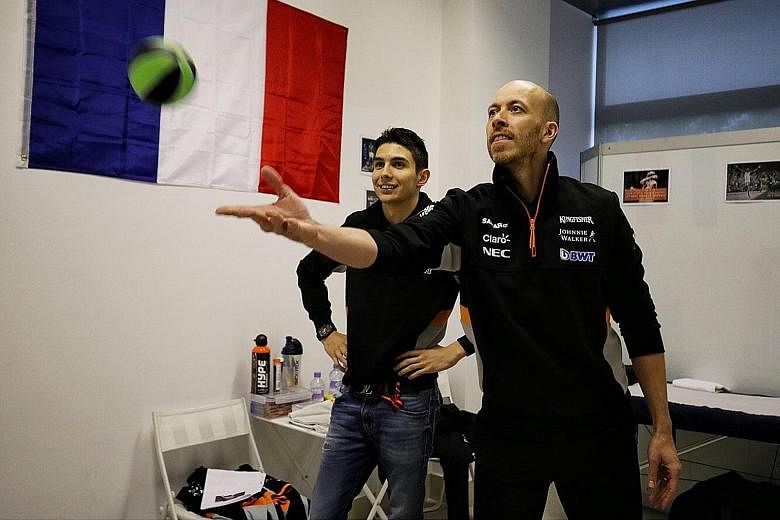Bumps and twists characterise the 23-turn Marina Bay Street Circuit. But it is not just the cars that will be tested in Singapore, widely-known as one of the toughest races on the Formula One (F1) calendar.
Heat and humidity will also place a premium on driver fitness, said Force India performance coach Dan Williams yesterday.
But the Briton, who trains the team's French driver Esteban Ocon, insisted that the F1 drivers are prepared to cope with "the most physical race of the season" this weekend.
"They have all-round fitness," he told The Straits Times.
He added that the drivers have fitness levels "fairly similar to a mid-distance runner".
"They have very good VO2 max with cardiovascular fitness, and a good level of strength and endurance," he explained.
After all, a standard sub-two-minute lap will see drivers experiencing heart rates of at least 120 beats per minute, spiking up to 170, and will test key muscles in the neck and the lower back.
Said Williams: "Physical preparation is very important in this sport. There are many reasons for that, mainly because of the forces pressed on the body when the drivers are in the car.
"For example, there's a strain on the neck from G-forces, which is a common one, so they have to have good neck strength and endurance.
"Also, the cardiovascular fitness helps with their concentration better."
To prepare the drivers for the strain of gravitational forces on their necks, resistance machines and bands are used to strengthen the area. They also undergo sports massages, although these are not as comfortable as they sound.
Williams said: "It's not like having a massage at a spa where it's nice and relaxing. We're doing a very tough sports massage and really getting into the muscles deep.
"The drivers spend a lot of time on the neck. That's one area that they worry about because the cars are more (physically demanding to drive)."
With wider tyres and more downforce generated by this season's cars, drivers have had to adapt to the greater physicality of the machines' handling, he added.
So while the training duration remains the same for Ocon - at least six days a week and up to six hours a day - the intensity has been ramped up. Off-season might be the most logical time for a break, but it is quite the contrary.
"The F1 calendar is so busy. The off-season starts at the end of November and it goes all the way through to the start of testing," said Williams. "That's when we have to get the drivers working really hard in preparation for the start of the new season."
The director of Pro Performance, a human performance consultancy, added: "The biggest misconception about F1 drivers is the fact that they think the drivers just sit in a car, so why do you have to be fit if you just sit in a car?
"People can't get their head around that and understand that."


